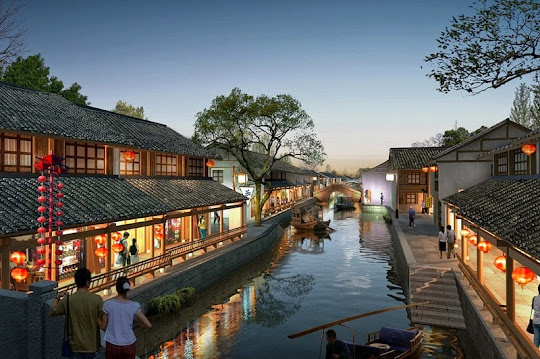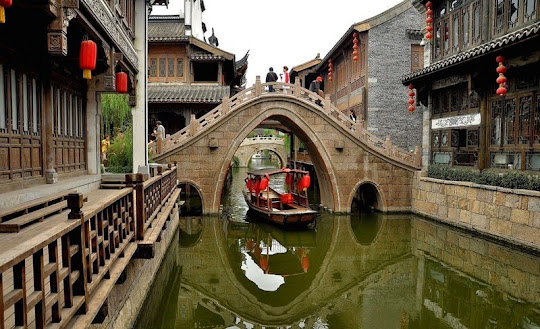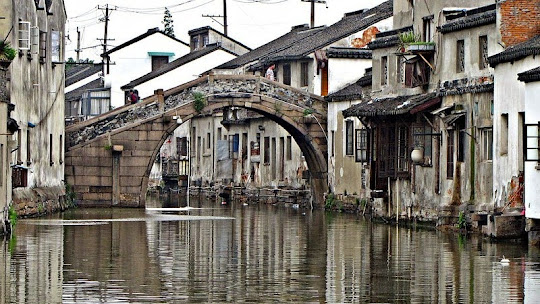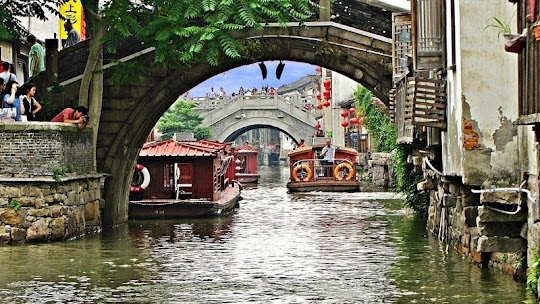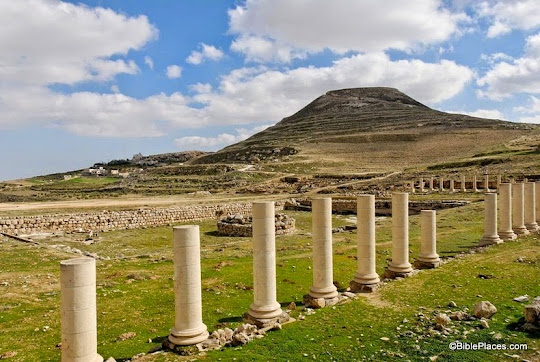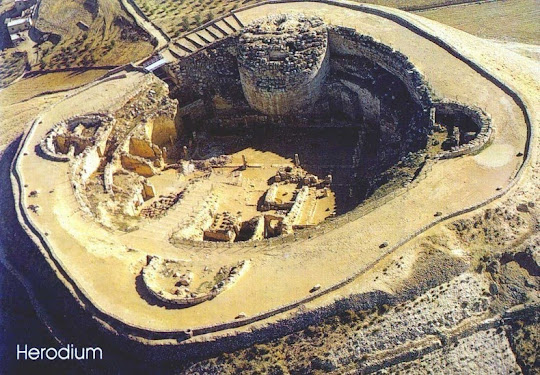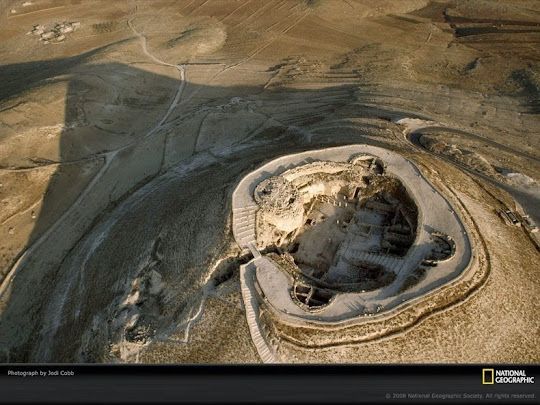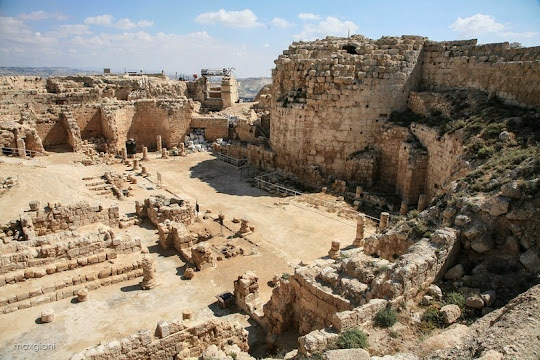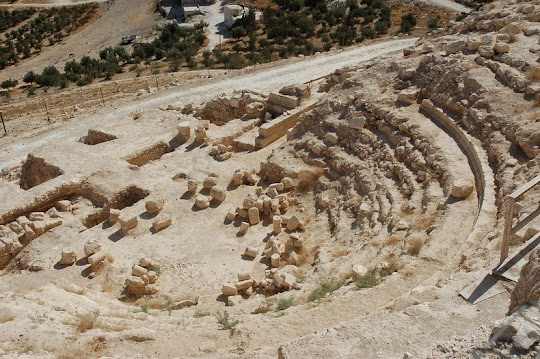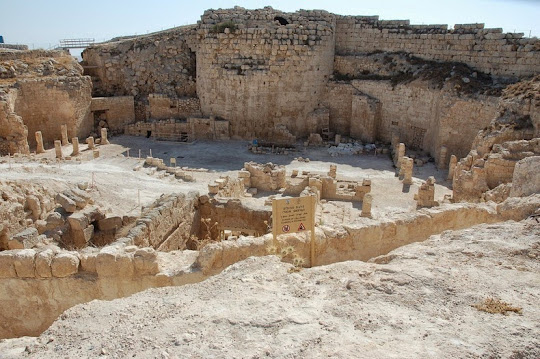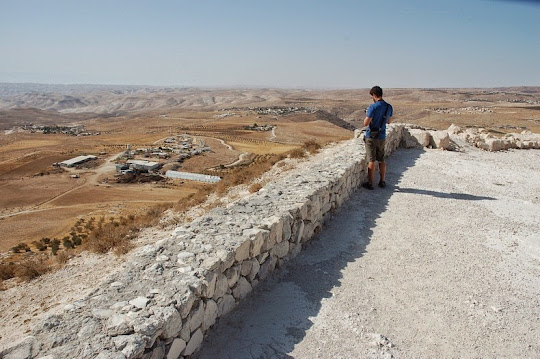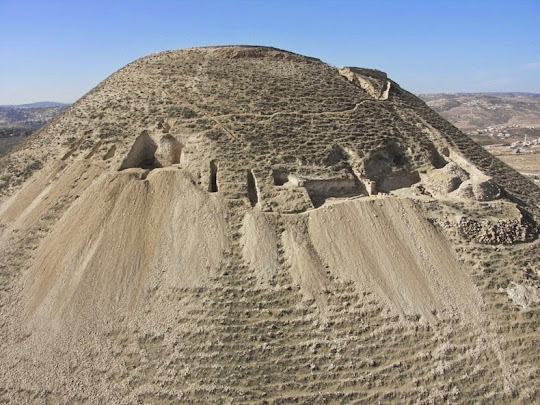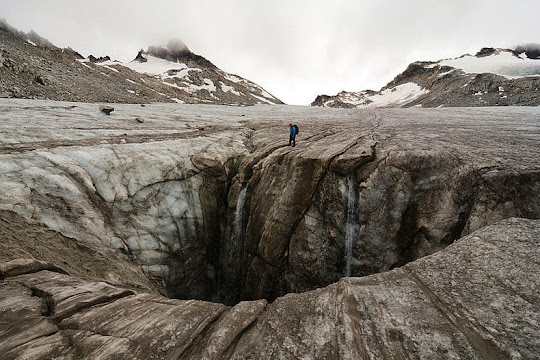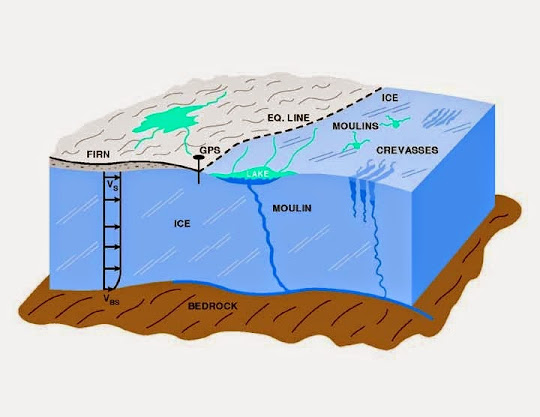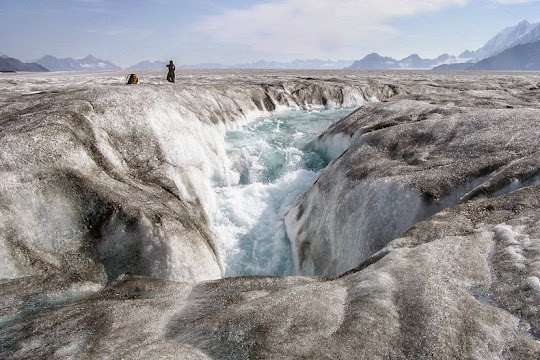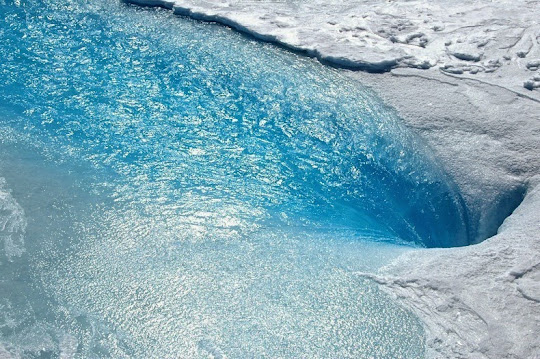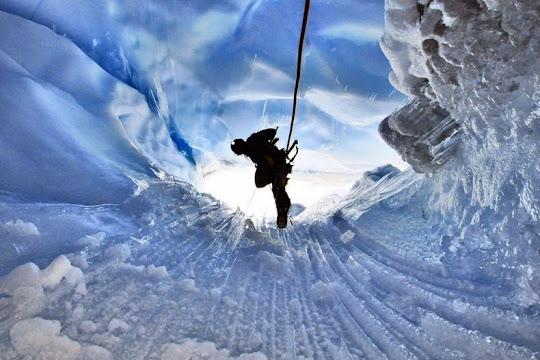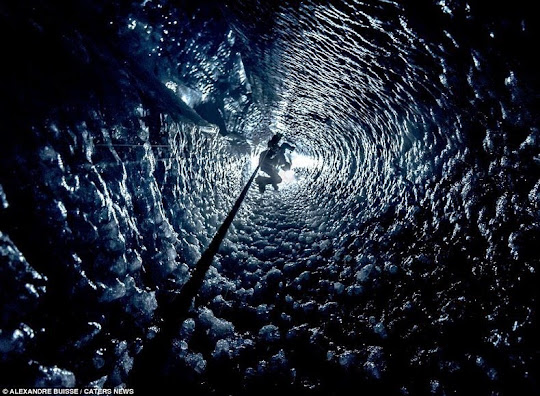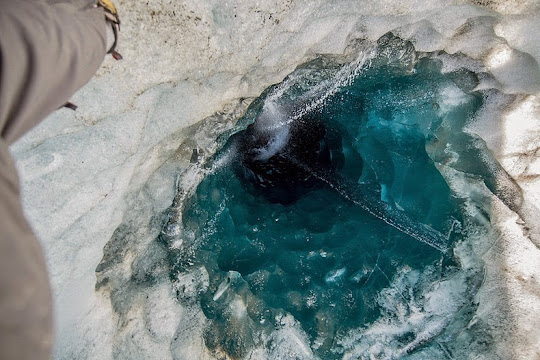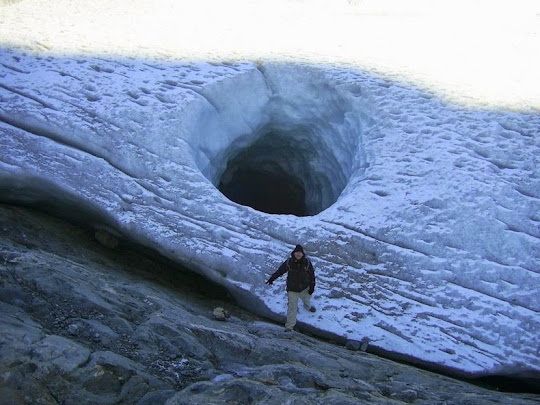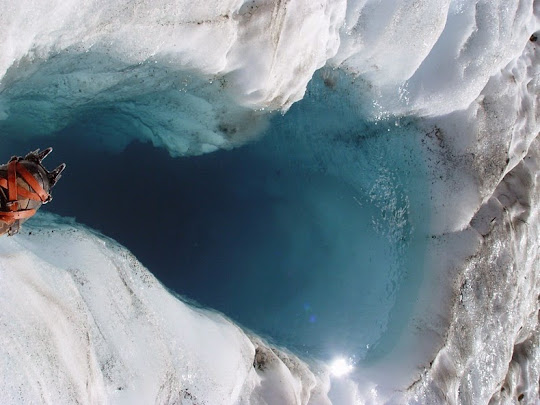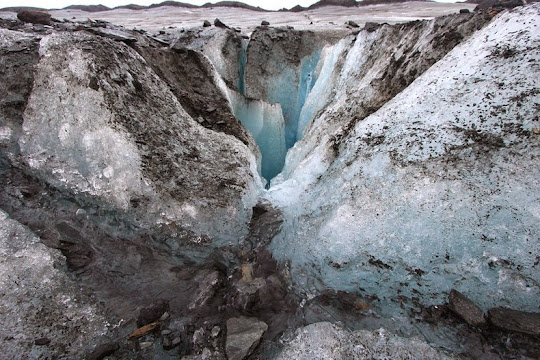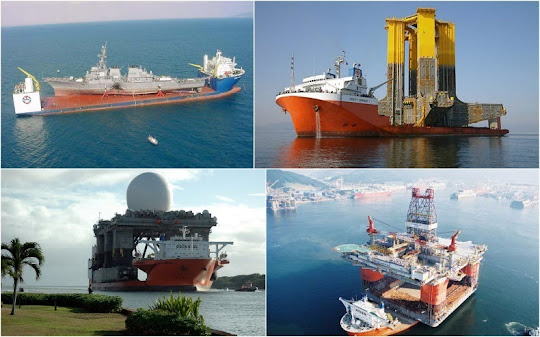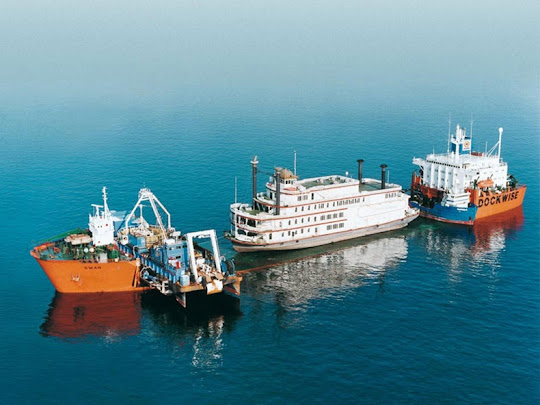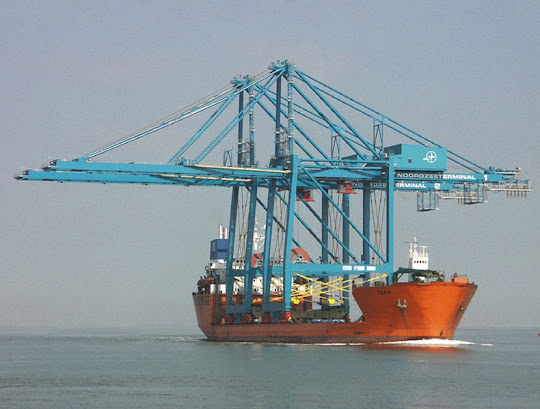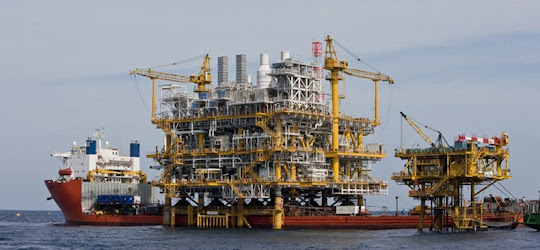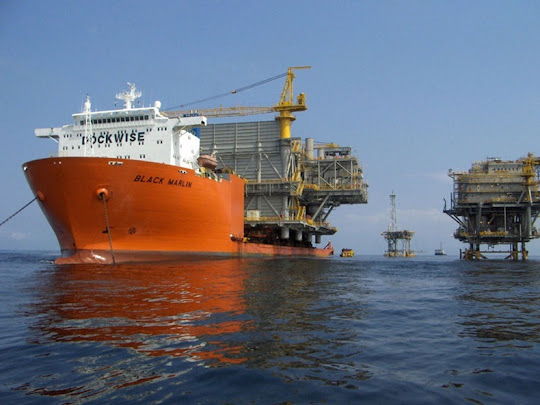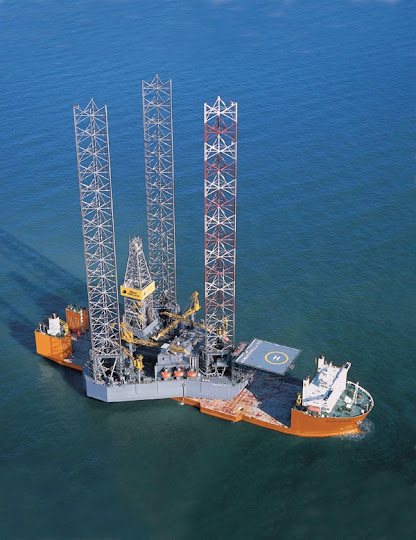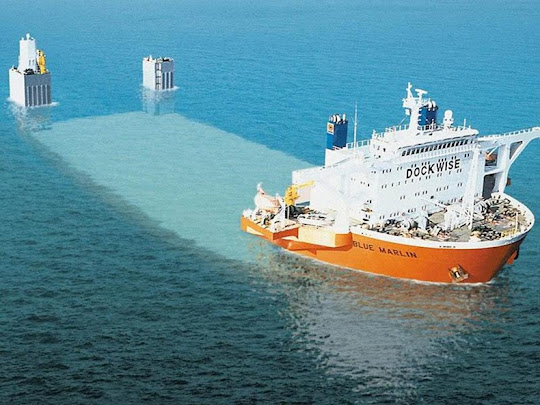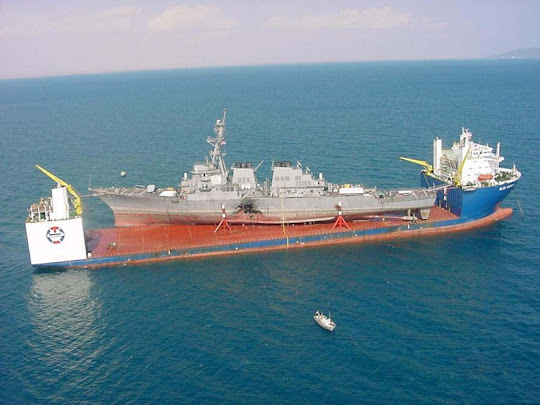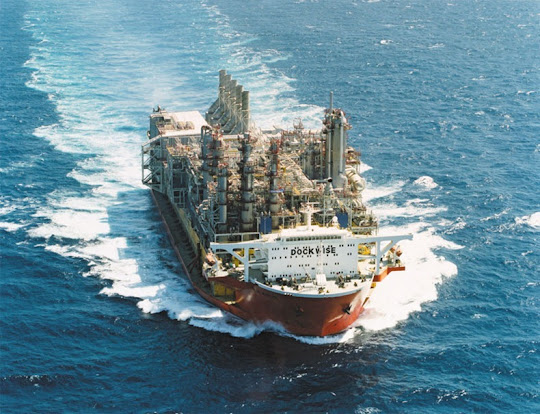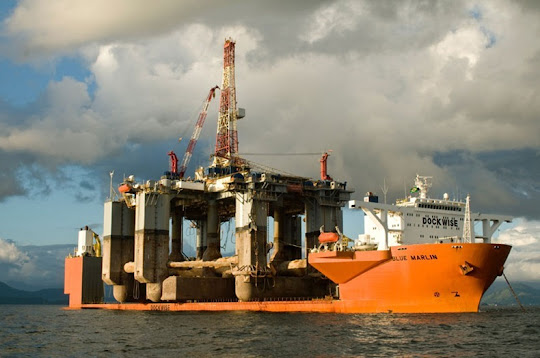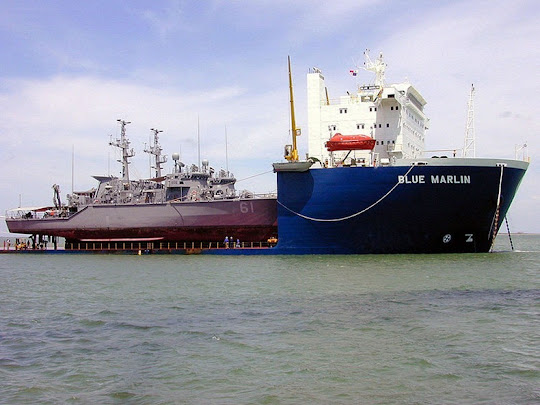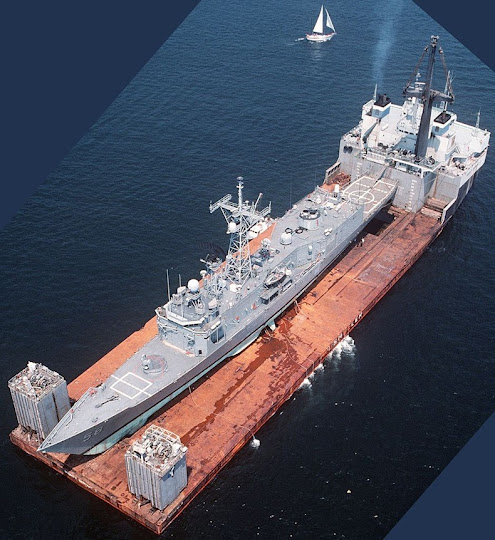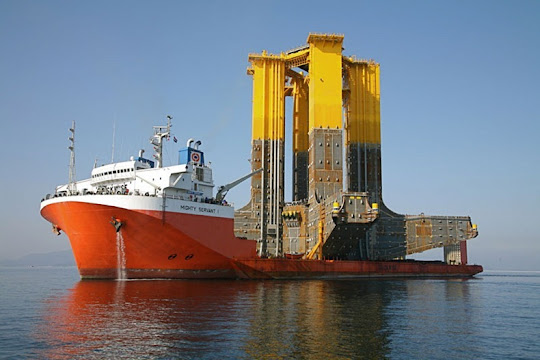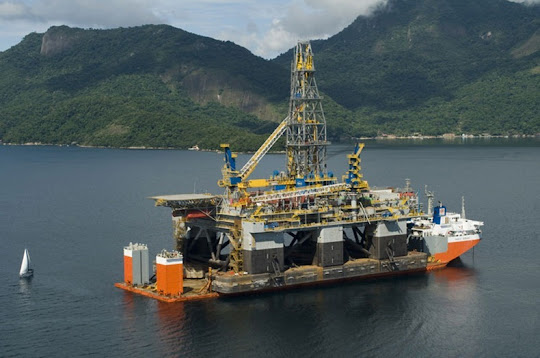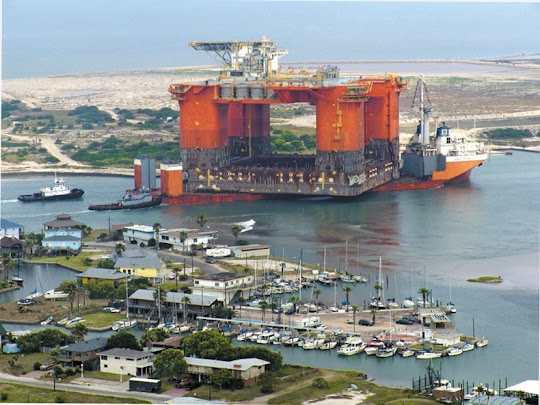During the winter months, when the Great Lakes in North America freezes over, a unique feature called “ice volcanoes” start forming along the edge of the frozen lakes. As winter ice begins to build along the shores of large lakes, strong winds blowing onshore and wave motion on the waters break up the ice, and they start piling on top of each and building what is known as an ice shelf. Amongst the numerous ice blocks comprising a shelf, many develops cracks.
Waves coming into shore from deeper water strike the edge of the ice shelf, causing them to go under the ice and as the water depth becomes shallow, the energy in the wave causes it to rise up, just like a tsunami. When the energetic wave finds a crack on the ice sheet, it causes the water to sprout creating an ice volcano. If the hole is covered with snow, the eruption may spray snow outward like a volcanic gas cloud.

A more appropriate name for these sprouting water holes would have been “blowholes”, but ice volcanoes actually grow just like their geological cousins. As the ejected water falls back onto the ice, it quickly freezes and begins to form an ice cone, a process very similar to the building of a lava cone surrounding a geologic volcanic vent. The ice cones range in size from 3 feet to more than 30 feet high, and spew a mixture of icy cold water and chunks of ice itself.
Not all ice sheets develop ice volcanoes. To build a good ice volcano cone, a unique set of conditions are required - the surface air temperature must be several degrees below freezing and lake waves several feet high and breaking onshore, which is probably why they are seen at very few places such as on the shores of Lake Michigan, Lake Erie and Lake Superior.





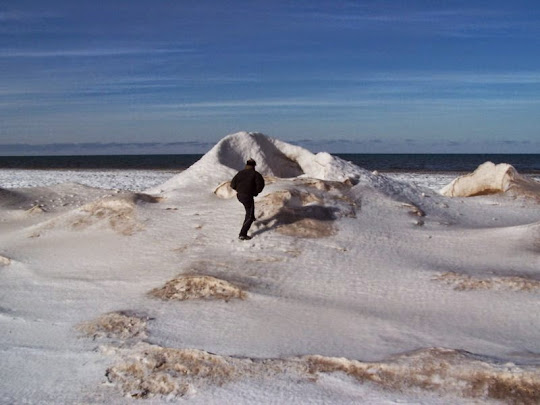
Source:
READ MORE»
Waves coming into shore from deeper water strike the edge of the ice shelf, causing them to go under the ice and as the water depth becomes shallow, the energy in the wave causes it to rise up, just like a tsunami. When the energetic wave finds a crack on the ice sheet, it causes the water to sprout creating an ice volcano. If the hole is covered with snow, the eruption may spray snow outward like a volcanic gas cloud.

A more appropriate name for these sprouting water holes would have been “blowholes”, but ice volcanoes actually grow just like their geological cousins. As the ejected water falls back onto the ice, it quickly freezes and begins to form an ice cone, a process very similar to the building of a lava cone surrounding a geologic volcanic vent. The ice cones range in size from 3 feet to more than 30 feet high, and spew a mixture of icy cold water and chunks of ice itself.
Not all ice sheets develop ice volcanoes. To build a good ice volcano cone, a unique set of conditions are required - the surface air temperature must be several degrees below freezing and lake waves several feet high and breaking onshore, which is probably why they are seen at very few places such as on the shores of Lake Michigan, Lake Erie and Lake Superior.






Source:


